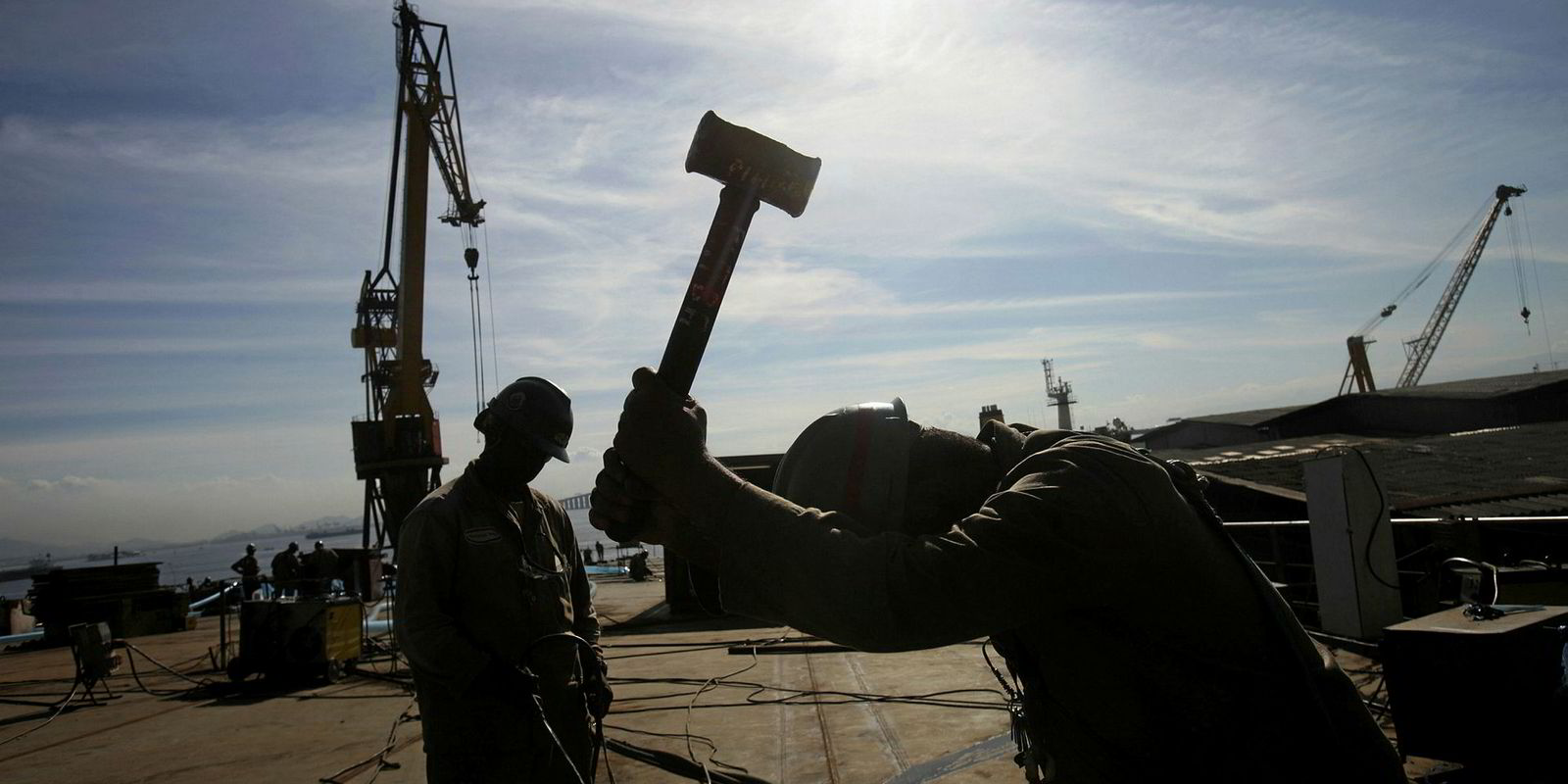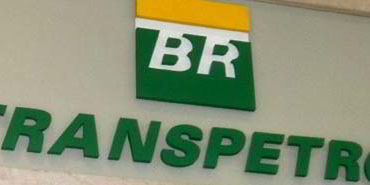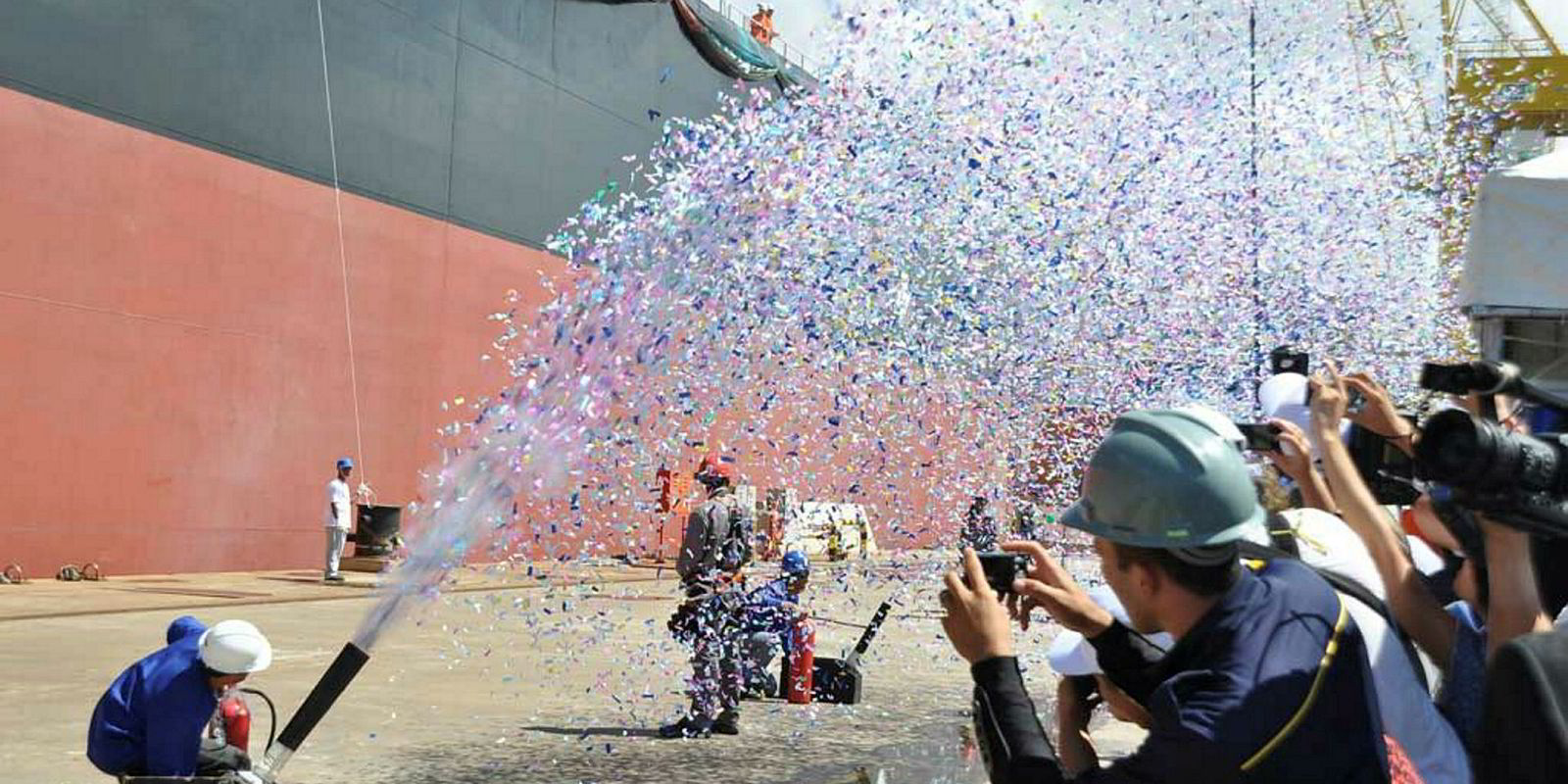Brazil’s politics have just taken a volatile turn after decades of ups and downs. Its shipbuilding industry has gone through similar contortions. Now, a new government under the most polarising president in its democratic history, Jair Bolsonaro, could mean more twists and turns for the country’s shipyards.
The last great peak reached by the national shipbuilding industry was in December 2014, when 82,000 people were employed directly at 55 shipyards, and 300,000 employed indirectly. By the middle of this year those numbers had plummeted to 31,000 directly employed after the Operation Car Wash corruption scandal that rocked state-controlled oil giant Petrobras.
But that is only the latest turmoil since the 1970s, when the rapidly industrialising military government transformed Brazil into the world’s second-largest shipbuilding nation, behind Japan.
The domestic industry atrophied in the 1990s, but the left-wing government of President Luiz Inacio Lula da Silva, which came to power in 2003, moved quickly to revive the moribund sector. Huge progress was made but halted by the corruption scandal.
National Shipbuilding Association (Sinaval) executive secretary Sergio Leal, who has worked in the industry for 34 years, has seen the peaks and troughs.
Leal, who featured in a TW+ feature in 2014, focusing on his samba exploits in Carnival, remembers the halcyon days that pushed Sinaval’s membership from 29 companies in 2009 to 50 by early 2015. It has now fallen back to 28.

“Everything seemed to be going so well. We were heading for 100,000 workers, and every year new shipyards were opening up to soak up the growing orders, especially from Transpetro [the shipping arm of Petrobras],” he reflects with pride. “But then it all went downhill, and quite rapidly too.”
Now, however, Leal has cause for hope. A mini-revival could be under way.
Alianca Navegacao e Logistica — the regional coastal arm of Hamburg Sud, now owned by Maersk Line — has signed a memorandum of understanding to build two 4,800-teu containerships at the struggling Estaleiro Atlantico Sul (EAS) shipyard in Suape, in the impoverished northeast.
And the Brazilian Navy has drawn up a shortlist of yards — Wilson, Sons (with Damen and Saab as partners); Enseada; Vard Promar (with Fincantieri); and Estaleiro Oceana (with Thyssenkrupp) — to build four corvettes costing $1.6bn.
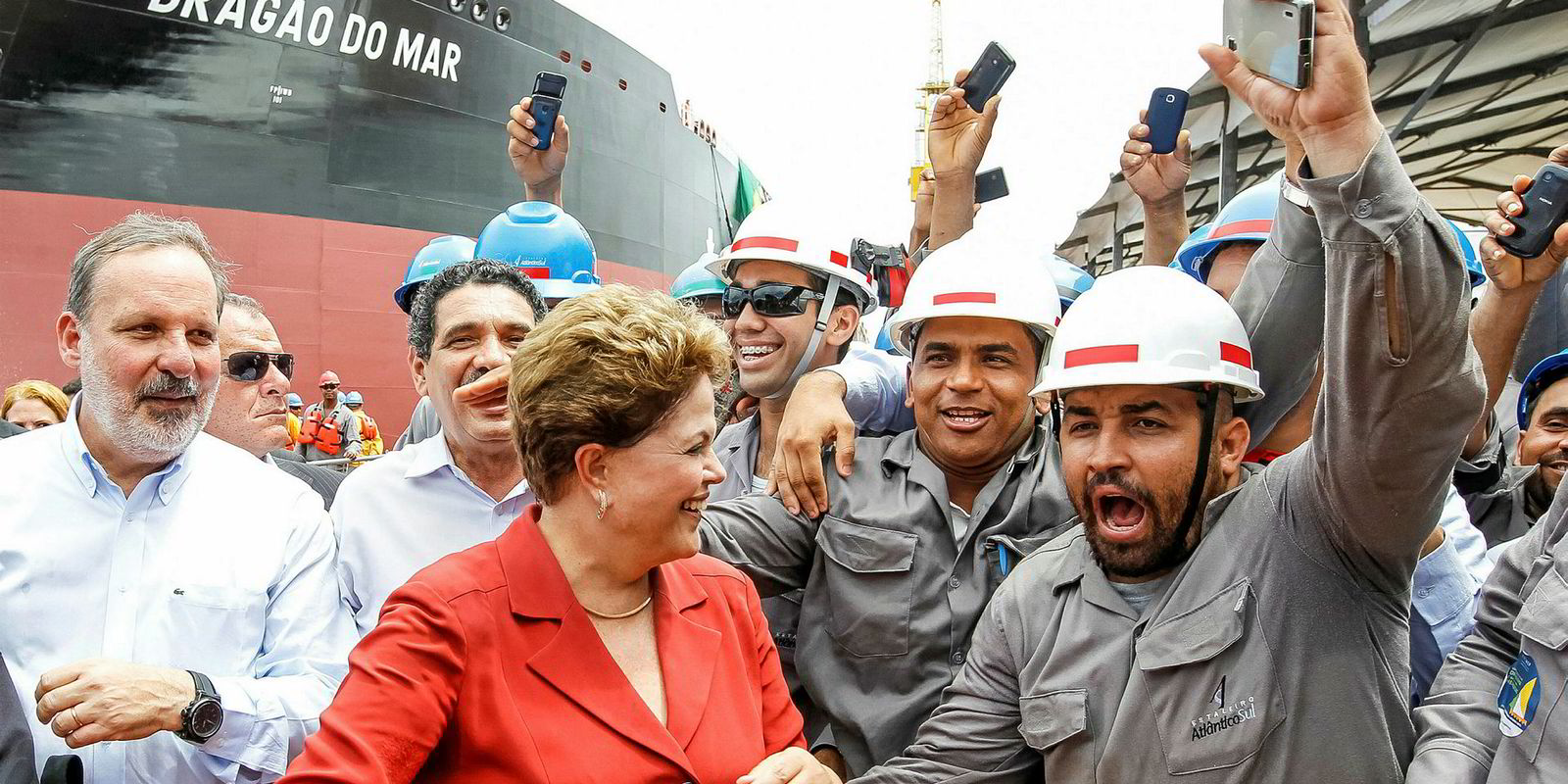
EAS president Harro Burmann says that even if the Alianca order is firmed up, the yard, which has been building tankers for Transpetro, will still have to lay off 200-300 workers out of a workforce of 3,300. At its peak, around four years ago, EAS employed 6,100 people, but it has no new orders after next June.
“We have deliveries scheduled until June 2019, so we have this gap between June and October. Today we do not have a solution for this, but we can’t keep all the jobs, so more reductions will occur next year,” Burmann says. But he is optimistic about winning another order for cabotage vessels from an international company believed by insiders to be CMA CGM, for its Mercosul Line coastal service.
Conditions for the shipbuilding industry are “bleak” today, says Armando Freigedo Rodrigues, a director of the Aquapar consultancy in Rio de Janeiro. The EAS boxship orders are “interesting but challenging”.
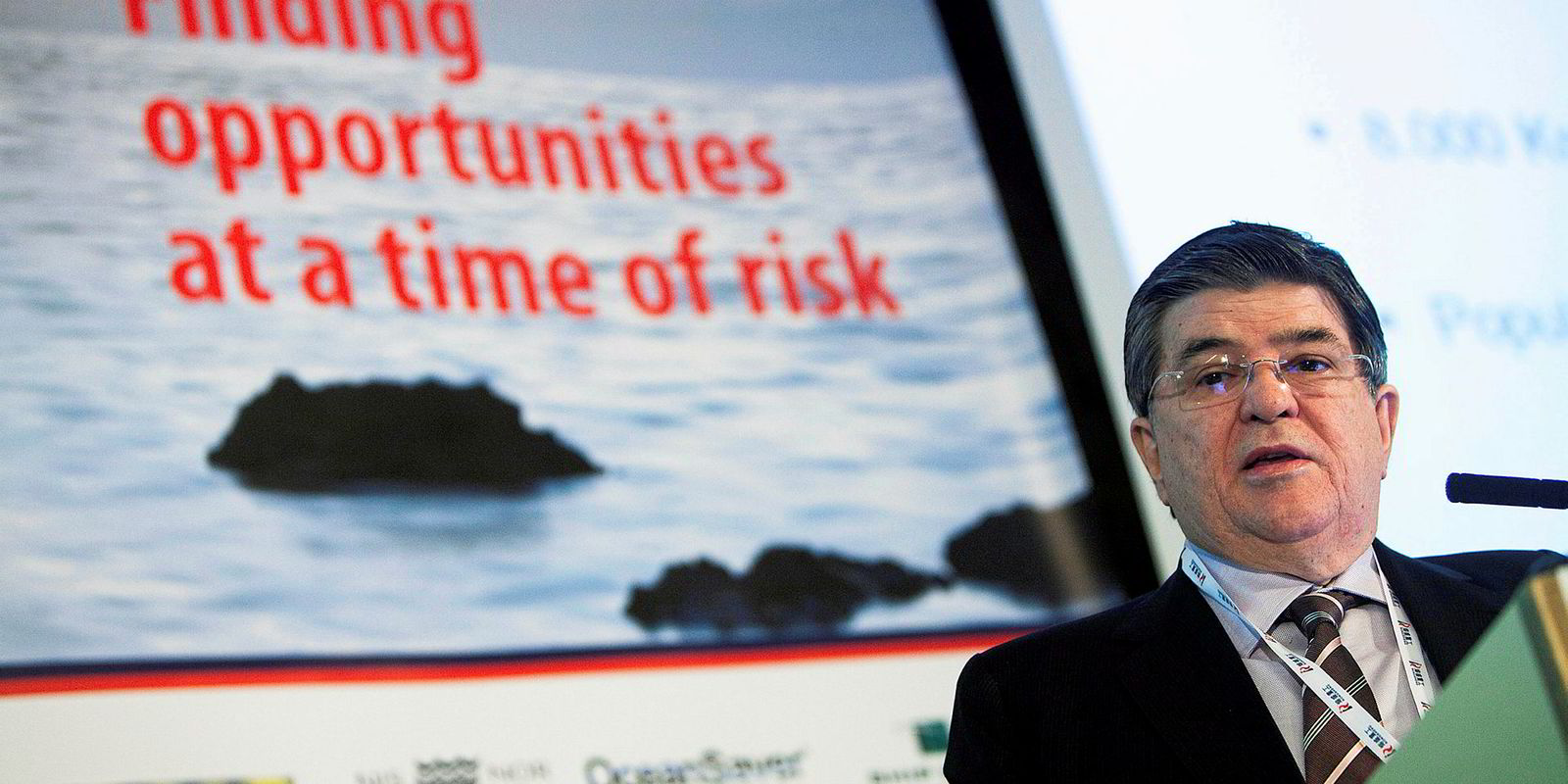
“I think the truckers’ strike [Brazil was brought to a standstill in May by 500,000 freelance truck drivers blockading key roads] and the restrictive and expensive freight rates that have ensued have created opportunities for the coastal box operators to expand,” says Rodrigues, who worked for the Department of Merchant Marine for many years.
“However, [container carrier] Log-In had a dismal time trying to build boxships at the EISA shipyard, and EAS has no experience in this sector.” Two hulls are nearly completed at EISA, but owner German Efromovich is locked in a battle with creditors after work was frozen three years ago. “It could be viable for Alianca, [but only] if the correct safeguards are in place,” Rodrigues comments.
In September, EAS delivered its 12th tanker of a total of 15 ordered by Transpetro, plus the second in a series of five aframax tankers, both before the contractual deadline. Burmann emphasises that productivity has improved enormously since huge delays to the first ship in 2006.
EAS’s problems, and the wider industry’s, are part of a sorry saga of government interference, corruption and the building up of an industrial sector for political reasons rather than to cater for a long-term viable market.
About 90% of all shipyard workers were based in and around Rio de Janeiro in 1999, but only 1,000 or so were gainfully employed until Wagner Victer, the state government under-secretary for energy, shipbuilding and petroleum, offered financial incentives to stimulate the construction of offshore support vessels to service the burgeoning Brazilian oil boom. Oilfields were being discovered with reserves estimated at between 35 billion and 80 billion barrels that would require tankers, drillships, OSVs and platforms.
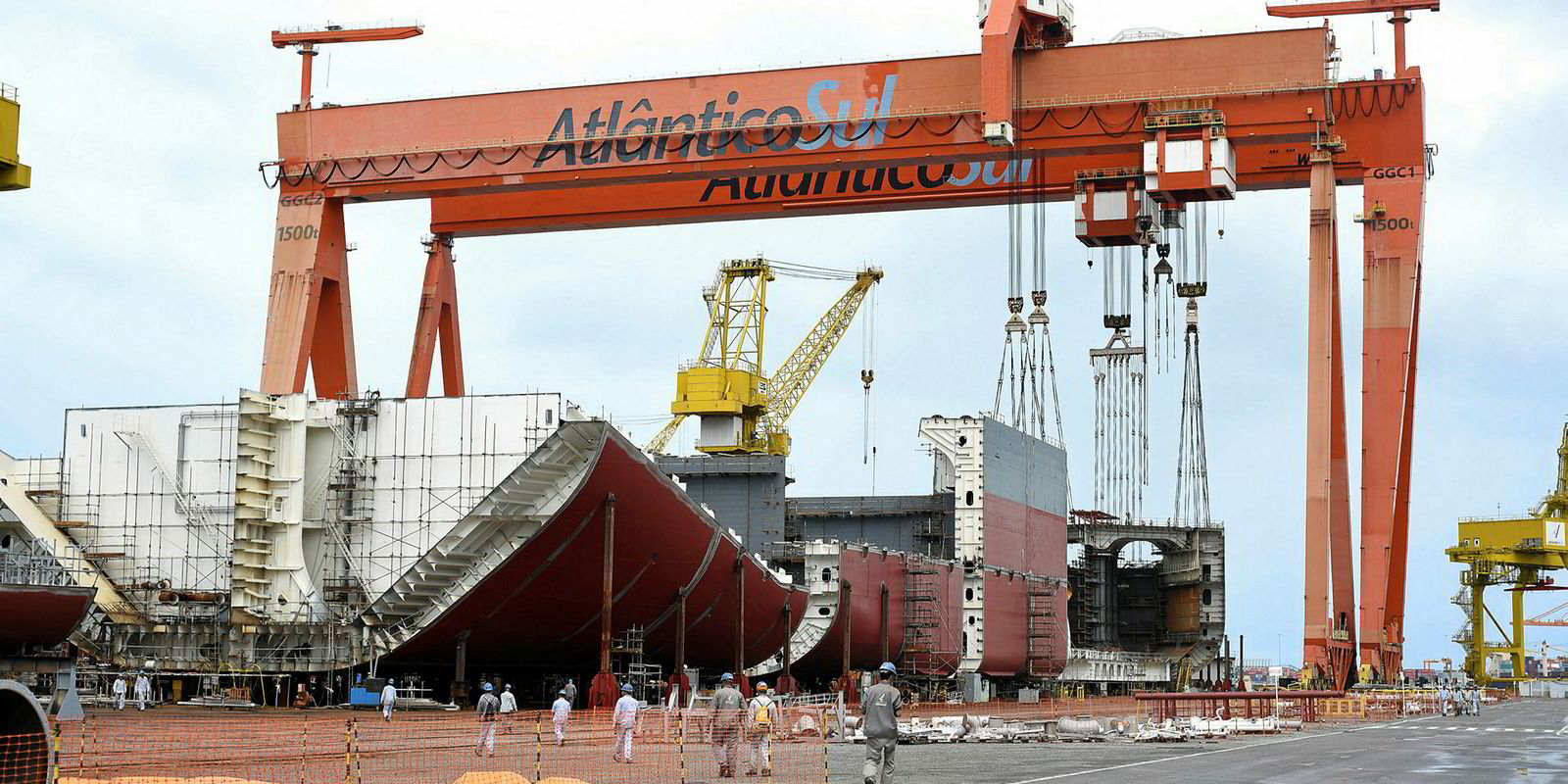
Victer was a champion of Rio’s shipbuilding industry, so when Sergio Machado, president of Transpetro for 11 years from 2003 to 2014, began diverting millions of dollars to EAS, via the Brazilian National Economic Development Bank (BNDES) and the Merchant Marine Fund in 2006, Victer mocked the facility as a “virtual” yard.
“No orders, no welders, no crane, and they haven’t even built a fishing vessel. It is a virtual yard with no chance of succeeding,” he sneered. But succeed it did.
With Machado at Transpetro and 13 years of socialist governments under Lula and Dilma Rousseff, the shipbuilding industry gained traction on the back of the $6bn Promef national fleet renewal scheme. Promef 1 and 2 were for 49 tankers and the third was for 50. Most of phase three has been cancelled or postponed.
In May 2010, when the 157,500-dwt Joao Candido was launched at EAS as the first tanker to be built in Brazil for 15 years, Machado was the proudest man in Brazil. But two years later he was feeling the shame as the suezmax had still not entered service because of flaws in its welding. Large sections of the hull had to be rebuilt. Victer had warned Machado about “taking sugar plantation workers from the fields and trying to turn them into welders and engineers”.
Not long after that, rumours began circulating that Machado was involved in kick-backs and was stashing money away in Swiss bank accounts. Facing a long prison sentence, he gave state’s evidence, and — armed with recording devices — ensnared key politicians, including planning minister Romero Juca and Fabiano Silveira (ironically, the Minister of Transparency).
Built with BNDES money to construct oil platforms and modules for Petrobras, Estaleiro and a couple of smaller yards in the far south of the country employed 7,500 workers in 2014. But it fell into debt when the oil giant cancelled orders and shifted production abroad. Owner Ecovix is now trying to sell the facility.
The political philosophy of Machado, Lula and Rousseff had been to spread shipbuilding riches around Brazil and break up Rio state’s quasi-monopoly. They succeeded. From handling 90% of all newbuilds up to 2009, Rio’s share had fallen to just over 60% four years ago. But the trend is now reversing.
Sinaval, under the presidency of Ariovaldo Rocha, had become a major lobbyist for more local content to be used in the construction of ships at Brazilian yards, even though they were 20%-30% more expensive than those coming out of South Korea or Japan.
Many commentators suggested the “extra Brazil cost” was due to Petrobras demanding vessels with the highest specifications, but once the investigations into corruption widened out, it became clear that there was another reason: the need for slush funds to pay off politicians and fund political parties.
Even so, Brazilian shipbuilding was booming in 2010, alongside the expansion of oil production. The nation’s shipbuilders had jumped from 20th in the world to number seven, and the fifth-biggest in terms of tankers. At the same time, Transpetro was operating 54 tankers and, with Petrobras, chartering in 60 more.
Machado was arguing that Brazil was spending billions of dollars every year chartering in vessels to import and export its oil, so building its own vessels would save the country billions. At the peak of the boom, Transpetro/Petrobras had ordered 49 tankers and drillships from EAS at a cost of more than $11bn.
Several tranches of those orders have now been cancelled. The largest, for seven vessels worth $1.22bn, was dropped two years ago. Today, Petrobras prefers to charter in much of its tanker tonnage.
As many pundits said at the time, Brazil’s shipyards had put too many eggs in one basket — the one belonging to Petrobras/Transpetro. “The problem was that after Dilma Rousseff was impeached [in May 2016] there was no Plan B,” Leal says. “There was Plan A, which was to win contracts for Petrobras, but there was no other plan.”
After the Rousseff government fell, Michel Temer’s PMDB (Brazilian Democratic Movement) and its coalition took over, and Leal says, “they changed the model. They have been trying to prevent Petrobras from operating so many oil platforms.
“We were expecting a transition period between the old model and the new model, but not a sudden radical change. They seem to be saying no more orders in this country. At Sinaval we are working hard to change this mentality.”
International companies such as SBM Offshore and Modec have begun to take on more of Petrobras’ platform business, with many observers arguing this is more likely to guarantee honesty and transparency, but Leal comments: “It has caused the shipyard industry in Brazil to almost break down.”
The Temer government has also campaigned to reduce costs by cutting local content from 65% to 25% and importing parts from around the world, especially China. Sinaval is also fighting that move.
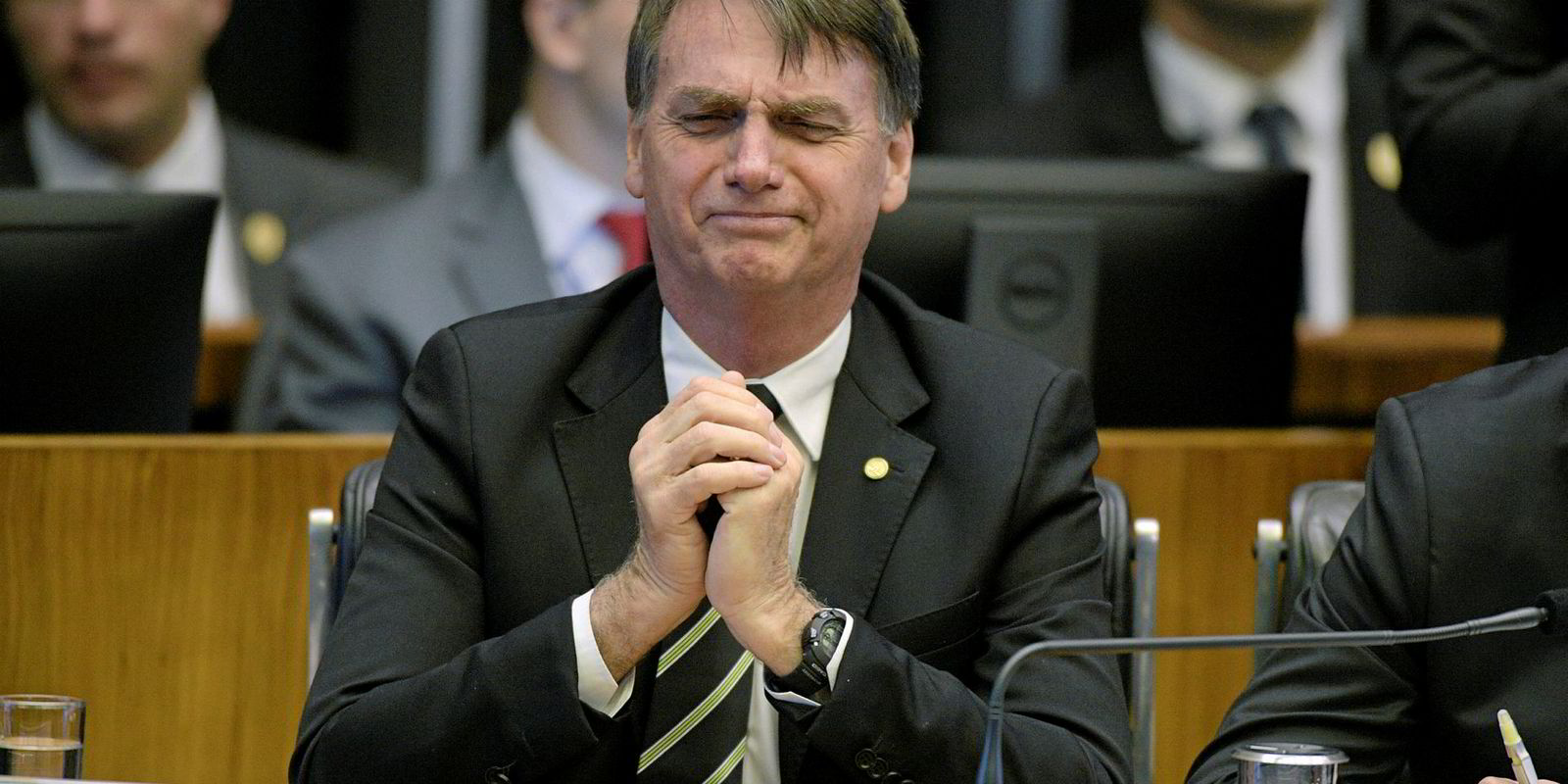
“We can see that the time for 65% is no more, but we are asking that the government keeps local content at 40%,” Leal says. At 25%, he warns, “our shipyards would have to sack a lot more people”. He suggests big savings could be made if EAS built hulls in Brazil for Petrobras but stern and bow sections were constructed in China and Singapore by foreign companies.
“If the hulls were built here, it would provide sufficient work to occupy several shipyards, including EAS and Enseada [Estaleiro Enseada do Paraguacu, in Bahia state],” he proposes.
“This is the easiest part of ship construction, so why contract that out worldwide when we can do it? If you built them in China or Singapore, you would also have to pay a high price for a heavylift vessel to bring the completed structure to Brazil.”
As well as switching production from tankers to boxships, Leal believes diversifying into shiprepair is another way to help yards. Many shipowners complain about the lack of repair facilities along the eastern coast of South America.
“At the moment many shipyards are not closed, but they are not working at the things they were originally built for,” Leal laments. “We have to survive until the orders return, but it’s not easy. Shiprepair business is one way to do this, and yards are active in this area now, especially those, like EAS, with dry docks.”
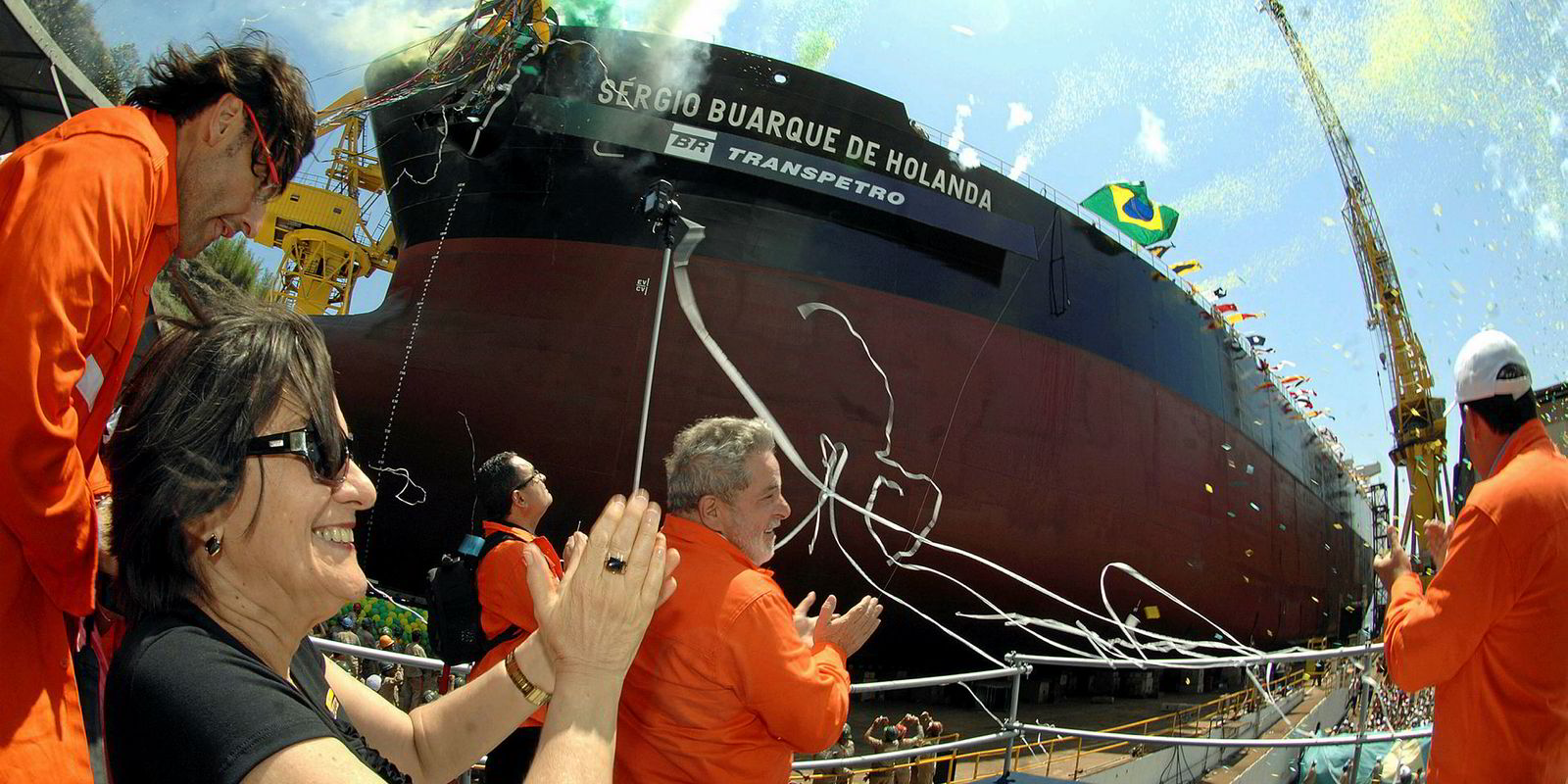
Shiprepair has its limitations, though. Enseada’s dry dock was only 80% completed before it ran out of BNDES cash, and it would need to finish the work before it can gain major business. Other closed or partly closed yards also need new orders to pay off debt that has built up, but Petrobras has pulled up the drawbridge and taken its orders abroad.
“Like history, shipbuilding goes in cycles, and political measures are cyclical,” Leal says. “A new government will pay attention, and change again, and we are working towards this. We think it is impossible, with so much shipbuilding infrastructure laying idle, for it to be permanent.”
Leal and others will not be drawn on future state involvement in shipbuilding. Lula and Rousseff’s PT (Workers’ Party), which took a beating in the congressional and presidential elections in October this year, might have been more likely to encourage Petrobras to bolster local content than the incoming president, the far-right, pro-market Bolsonaro. On the other hand, Bolsonaro’s nationalist approach might also be beneficial for the industry.
Leal remains optimistic: “We will have another administration who might think differently. It’s just not right to turn Brazilian shipbuilding into rubble.”
The Brazilian phrase ele tem jeito roughly translates as “somehow finding a way”. It would not be a total surprise if shipbuilding in the land of samba rose for a third time.
